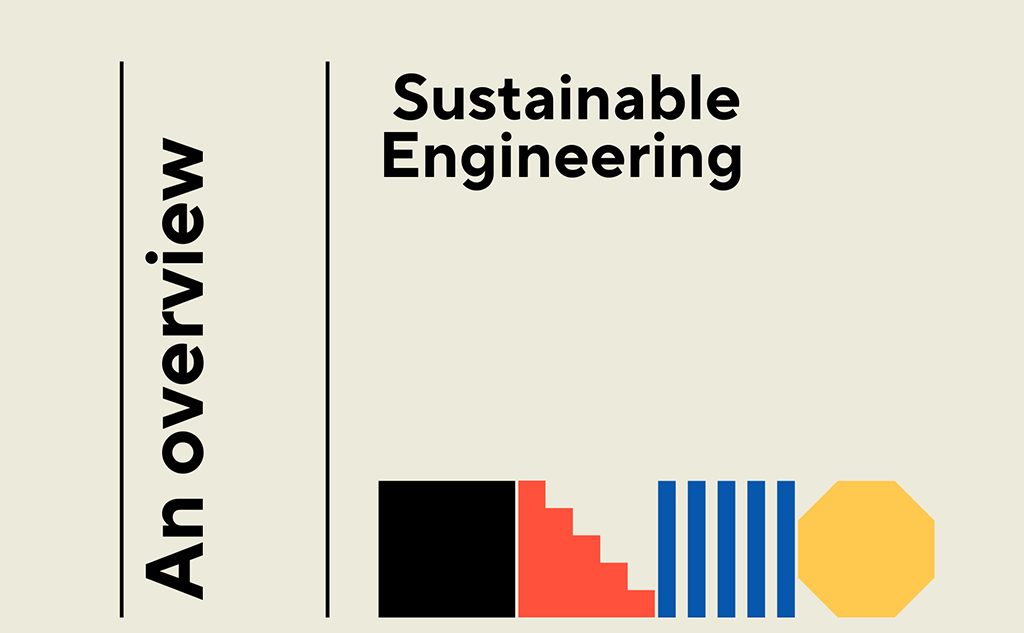These days it’s no longer unusual to hear talk of greening cities, eco-design, green industry and agriculture, waste recovery or the biological treatment of waste waters. Faced with the ecological emergency, we are, and indeed must, re-invent how we live, act, build, produce and consume… Sustainable development is finding its real meaning in bringing together and reconciling three worlds that have for too long been ignored: ecology, economy, and society.
At the heart of this transformation: sustainable engineering. More than a buzzword, it embodies a true paradigm shift. What are its fundamental principles? Beyond environmental considerations, what opportunities does it offer?
Here’s an overview.
The fundamental principles of sustainable engineering
Sustainable engineering is a branch of engineering that, beyond the basic technical dimension, takes into account the challenges of sustainable development (ecological, economic and social) in the design and development of constructions, products or systems. These designs must indeed satisfy the SDGs (Sustainable Development Goals) in order to “respond to current needs without compromising the ability of future generations to respond to their own”.
Any engineer developing such projects must therefore integrate:
- Environmental performance: in particular through eco-design which encompasses the rational use of natural resources and the minimisation of the projects’ impacts on the environment (from extraction of raw materials through to the product’s end-of-life, including production, design and utilisation).
- Economic performance: the engineer must take into consideration the economic viability and durability of the constructions, products or systems they are designing.
- The quality of life of current and future populations: the projects must offer quality of life improvements for all, but also facilitate their resilience in the face of climate change.
To illustrate these fundamental principles, let’s take the example of a Quebec project developed by Sanimax and the Quebec Centre for Industrial Research (CRIQ). During the Envirolys 2017 competition, these two prize-winners presented a solution for the treatment and deodorisation of industrial atmospheric emissions. The developed biotechnology integrates the three dimensions of sustainable development: based on using residual construction materials (concrete), while also serving to minimise the impact of industrial atmospheric emissions (environmental performance), to reduce odour nuisance (quality of life of residents) and to reduce the costs and extend the life of the technology as compared to conventional biofiltration solutions (economic performance).
Economic and social opportunities to consider
Sustainable engineering is a driver of progress at both economic and social levels. In particular, it stimulates innovation by seeking to develop technologies that are more efficient not just in terms of productivity, but also in terms of environmental impact. We also know that as they become increasingly concerned for their well-being, their health and the planet, graduates and consumers are today choosing companies, industries or agricultural enterprises that place sustainable development at the heart of their concerns.
Integrating sustainable engineering right at the outset of development is therefore an opportunity to be seized by businesses of all kinds. Large corporates such as Google, Danone, and IBM – among many others – understand this better than most and are quick to highlight their own commitment in this direction.
Integrating sustainable engineering into the responsible approach
The integration of this discipline into a company’s organisation generally pivots around five key axes:
- The initial evaluation of the environmental, social and economic impacts of a company’s activities in order to identify where improvements can be made.
- Eco-design, which integrates the principles of sustainable development at every stage of the life cycle of a product, system or construction.
- Regular evaluation of the impacts with the goal of further improving its environmental, economic and social performance.
- Training in, and awareness-raising of, sustainable practices for everyone involved (colleagues, suppliers, consumers and customers, elected officials, partners etc.).
- Collaboration with these stakeholders in order to reinforce everyone’s commitment, as well as to obtain different perspectives and better identify priorities.
Numerous tools exist that can assist in putting in place these more responsible practices. We could for example mention Life Cycle Analysis (LCA), the ISO 14001 (Environmental Management), ISO 26000 (Corporate Social Responsibility) or ISO 50001 (Energy Management) standards, the LEED, HQE or BREEAM accreditations (high environmental quality) for construction standards, the EMAS eco-management and audit scheme, or even ecolabels.
Sustainable engineering, a response to the challenges of sustainable development
Sustainable engineering goes beyond superficial discussion or passing fads to become an essential pillar in sustainable development.
Between economic growth, improving the quality of life and the resilience of populations, as well as protection of the environment and biodiversity, the opportunities that are emerging stand as testament to the potential that sustainable engineering can offer.




